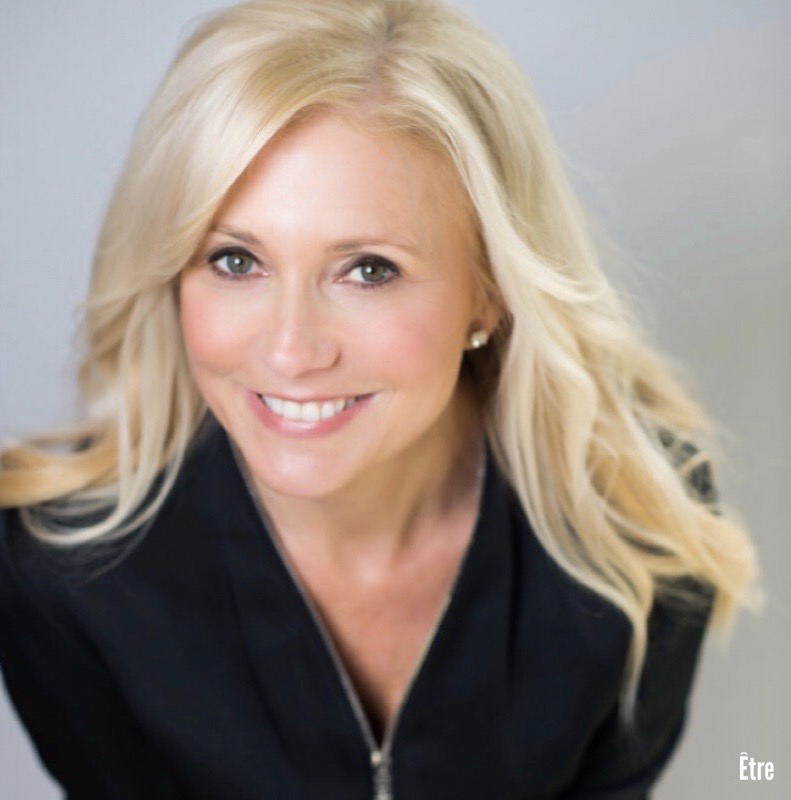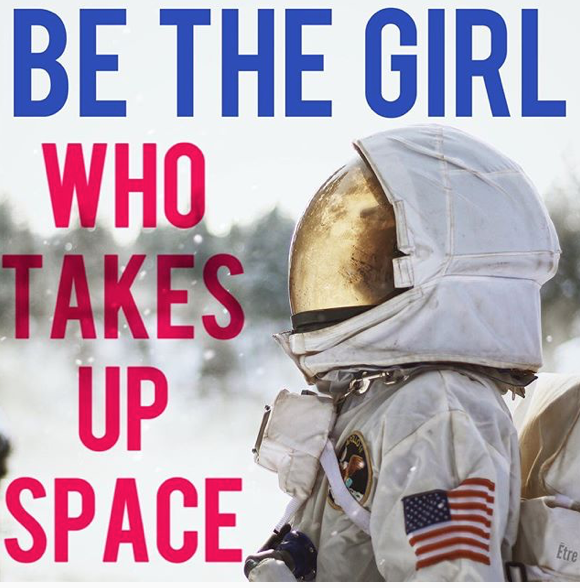“When I was in high school, I loved biology and I really wanted to work at NASA. But interestingly, I didn’t see how the two were connected. It wasn’t until I met a female astronaut who lived right down the street that I realized jobs like this even existed.” So began one of the most fascinating conversations I’ve had as the founder of Être, and one of the most impactful mentors I can imagine for STEM-loving middle school girls. So, to all the future astronauts eyeing ninth grade biology and following SpaceX and NASA on Insta – this one’s for you.
Meet Dr. Liz Warren, PhD, Associate Program Scientist with the International Space Station, U.S. National Lab, and part of the team sponsoring new physical science, life science and biotech research projects lifting into orbit with the upcoming SpaceX CRS-17 mission (launching on SpaceX’s Falcon 9 rocket).
Ê: We’re so excited to talk to you! We heard you’ve spent more than a decade studying the effect of space on issues related to health. We have so many questions.
LW: Actually, it’s closer to two decades of study! Believe it or not, in high school I really loved biology and I knew I wanted to work at NASA. In my junior year, my mother cut out a newspaper article about a space shuttle mission focused on life cycle science in space and left it for me. Until that point I had never realized the effect of space on plants and animals, and I became laser-focused. I decided to study physiology in college and I’ve been involved with space flight research since then. So it’s really been over twenty years!
Ê: We couldn’t love your mom more right now. Was there a particular mentor that influenced you at the time?
LW: Believe it or not, yes – from that original article! The astronaut quoted in the piece was a NASA Payload Specialist named Millie Hughes-Fulford, and it turned out she lived two miles away from us in California! To my utter mortification my mother invited her over for tea, but I’ve been thankful ever since – Millie has been a mentor since I turned sixteen. “You can do anything you want,” she told me that day. “It may be hard, but it’s absolutely possible.”
Ê: We heard you also went to Space Camp around that time? How cool was that?
LW: Really cool. It reaffirmed my desire to work in space and boosted my confidence tremendously. I met a bunch of other kids just like me…I literally found my tribe.
Ê: Then you worked at NASA and now your tribe is at the ISS U.S. National Lab, where you are an Associate Program Scientist. What exactly does that mean?
LW: It means a few things. First, my role is to vet the science brought to the National Lab. I review scientific proposals and look for whether the experiments would be not only feasible, but also beneficial to our lives on Earth. Second, I teach the astronauts about the underlying science of the experiments. Finally, I engage other scientists who might not be considering space experiments and tell them about the ISS. I share the magic of seeing science in an entirely new way, and ask them to imagine their research in the context of space. What if there wasn’t gravity? How would weightlessness change their theories?
Ê: Wait, is that what you mean when you talk about microgravity?
LW: Exactly. We say microgravity instead of zero gravity because a trace of gravitational pull remains, but what we mean is when people or objects feel weightless in space. Microgravity can change how our bodies actually work in space – for example, muscles and bones can get weaker because gravity isn’t there to make them work harder. Microgravity can also change how experiments perform in space, because it makes certain chemical reactions happen faster than they would on Earth.
Ê: How? And what other variables affect your experiments in space?
LW: I like to focus on three main elements: First, microgravity. As I said, it changes how chemical reactions occur. Fire burns differently in space, for example, and other elements grow at an accelerated rate. Second, the environment outside the space station changes things. Extreme temperatures, hot or cold, add a new feature to experiments. And third, the unique low Earth orbit of the ISS. It may be hard to believe, but the space station is only 250 miles (400 km) from the Earth’s surface…it’s just that it’s straight up! To compare, the moon is about 250,000 miles away. Because of our lab’s low orbit and it’s broad path – the ISS covers more than 90% of the Earth’s population – our position offers another variable.
Ê: So cool. And now the ISS National Lab is preparing to launch SpaceX’s Dragon spacecraft! We’re crazy excited. Can you give us some examples of the medical experiments that will be on-board? We heard tissue chip research…?

LW: Yes – tissue chips! These are thumb drive-sized devices that hold human cells in miniaturized 3-D models. Picture tiny models of lung tissue, bone marrow, blood-brain barrier and bone cartilage that can be studied in microgravity. The elements I mentioned before will help us study aging and certain diseases (because they are accelerated in microgravity), and then we can test how effective different drugs will be in curing them.
Ê: So, things like osteoperosis or Alzheimer’s?
LW: You’ve got it. Things that can take a long time to manifest or study on Earth can be examined much faster in space. It’s so exciting to think that space could lead to such major health breakthroughs on Earth! Other areas too – advances in agriculture, climate change and tech innovation – are possible in this environment.
Ê: Who suggests more space-based research these days: colleges and universities or big companies?
LW: It’s both, really. We get amazing proposals from academia and the corporate world, and you can follow our current research online. What’s more, students can submit experiment ideas to take into space!
Ê: Stop it.
LW: No joke. We have programs like Space Station Explorers where students can submit ideas and teachers can get related resources and support materials! I’m especially fond of encouraging girls to stay interested in STEM and space, and ISS has an entire page called Focus on Girls and Women in Space Science. We have student and astronaut profiles as well as experiment summaries. You’ll love it.
Ê: We love it already. Did you know when you were in middle school that you’d be good at a job like this?
LW: No, not at all. I was not a straight A student (math was tough!) and I had plenty of challenges along the way. Plus, it can be hard in middle school when your friends think that it’s not cool that you like dissecting frogs (which I did) or that you’re smart (which I was). But I promise you, in the long run it is much cooler to be smart than not. The jobs available to people who stick with STEM are SO much more fun than other jobs, and many more doors become open to you. So stay with science and math. It’s all connected, and so, so worth it when you reach your goal.
Ê: Best advice ever. We’re so grateful for your time today and we’ll be GLUED to our screens watching the SpaceX Falcon 9 launch! If you could tell space-obsessed girls our age one last thing, what would it be?
LW: I promise, girls – being smart is cool.
* * * * *
Want to learn more about ISS U.S. National Lab? Check them out here and don’t miss their Space Station Explorers site here. Students – learn about ISS’ educational programs here and teachers – don’t miss the lesson plans here. Have other questions you want to ask? Email Être and we’ll submit a few. Finally, feeling social? Space-tweet the National Lab at @ISS_CASIS– they might even RT!
With deep thanks and admiration for Dr. Liz Warren and the entire ISS U.S. National Lab team, for speaking with Être and for inspiring girls everywhere to take up space.


